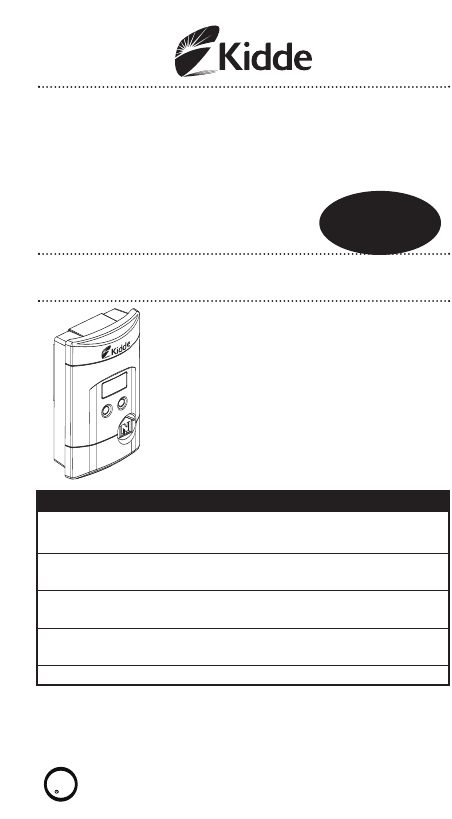User manual; Download; Download manual. Download Kidde KN-COB-B-LPM User Manual. Kidde KN-COB-B-LPM. This manual also for: Kn-copp-b-lpm, Kn-copp-b-lpm, Kn-cob-b-lp. Please, tick the box below to get your link: Get manual Manualslib has more than 473. The Kidde KN-COB-B-LPM battery operated carbon monoxide alarm utilizes sophisticated electronic components to protect you and your family from the dangers of carbon monoxide.

CO alarms should be mounted in
It is recommended that you install
your home.
locations, make sure you can hear
you install only one CO alarm in your home, install it near bedrooms,
• When wall mounting, place out of reach of children. Under no
circumstances should children be allowed to handle the CO alarm.
• Placing the alarm at eye level allows for optimum monitoring of the
3. Installation Locations
KITCHENBEDROOM
BEDROOM
Recommended Locations
Operating Range: 40°F (4.4°C) to 100°F (37.8°C)
Operating range: 10-95% non-condensing
85+ dB at 10’ @ 3.4±0.5 KHz pulsing alarm
Electrochemical
3-AA Batteries

Accuracy of Digital Display: (Model KN-COPP-B-LPM Only)
30-999 PPM +/-30% when measured in conditions of 80° F (+/- 10°
F), atmospheric pressure +/- 10% and 40% +/- 3% relative humidity.
Display readings may vary slightly depending on changes in the ambient
condition (temperature, humidity) and the condition of the sensor.
70 PPM = 60-240 min., 150 PPM = 10-50 min., 400 PPM = 4-15 min.
Model Kn Cob B Lpm
2529-7201-00(21008094A)_V1.indd 102529-7201-00(21008094A)_V1.indd 102011.1.6 9:31:21 AM2011.1.6 9:31:21 AM
Carbon Monoxide PPM Levels
Model KN-COPP-B-LPM is equipped with a digital display that shows
levels of CO (displayed in PPM – parts per million). Learn the difference
Dangerous Levels:
Kn-cob-b-lpm User Manual
When someone is experiencing symptoms of CO poisoning and CO read-
ings are generally above 100 PPM. Anytime someone is experiencing the
symptoms of CO poisoning this should be treated as an emergency. See
“What to do When the Alarm Sounds” (inside front cover).
Generally above 100 PPM, with no one experiencing symptoms. This
should be treated as an urgent situation. See “What to do When the
Mid Levels:
Generally between 50 PPM to 100 PPM. This should be cause for concern
and should not be ignored or dismissed. See “What to do When the

Low Levels:
Generally below 50 PPM. Kidde recommends you take action to eliminate
the source of CO. See “What to do When the Alarm Sounds” (inside
IMPORTANT: Model KN-COB-B-LPM does not have a digital dis-
play and does not display carbon monoxide levels in PPM. If the
alarm sounds, it should be treated as a potentially serious condi-
Kn-copp-b-lpm Manual
tion. See “What to do When the Alarm Sounds” (inside front cover).
Inside your home, appliances used for heating and cooking are the
most likely sources of CO. Vehicles running in attached garages can also
CO can be produced when burning any fossil fuel, such as gasoline, pro-
pane, natural gas, oil and wood. It can be produced by any fuel-burning
appliance that is malfunctioning, improperly installed, or not ventilated
• Automobiles, furnaces, gas ranges/stoves, gas clothes dryers, water
heaters, portable fuel burning space heaters and generators, fireplaces,
wood-burning stoves and certain swimming pool heaters.
• Blocked chimneys or flues, back drafts and changes in air pressure, cor-
2529-7201-00(21008094A)_V1.indd 62529-7201-00(21008094A)_V1.indd 62011.1.6 9:31:19 AM2011.1.6 9:31:19 AM